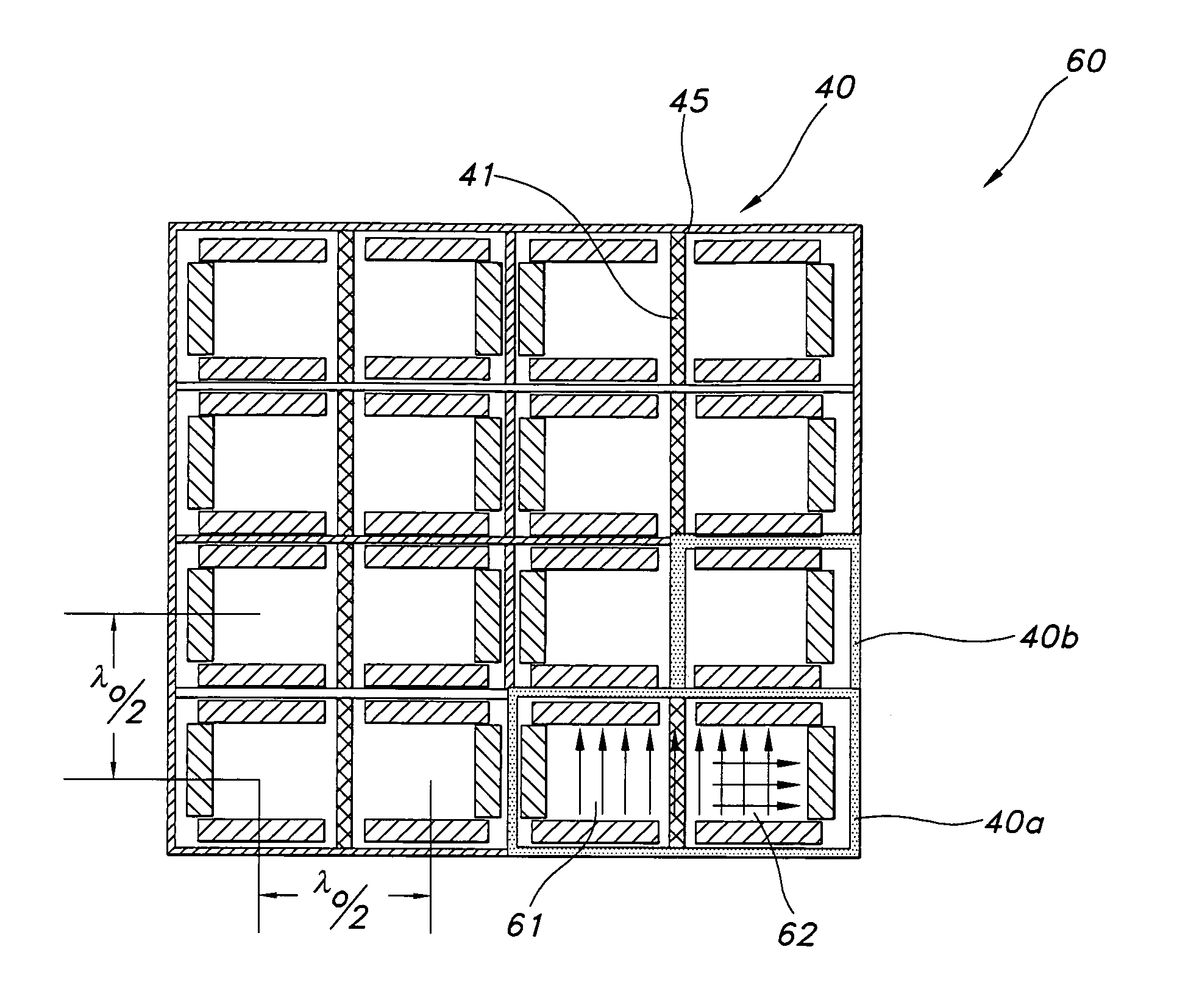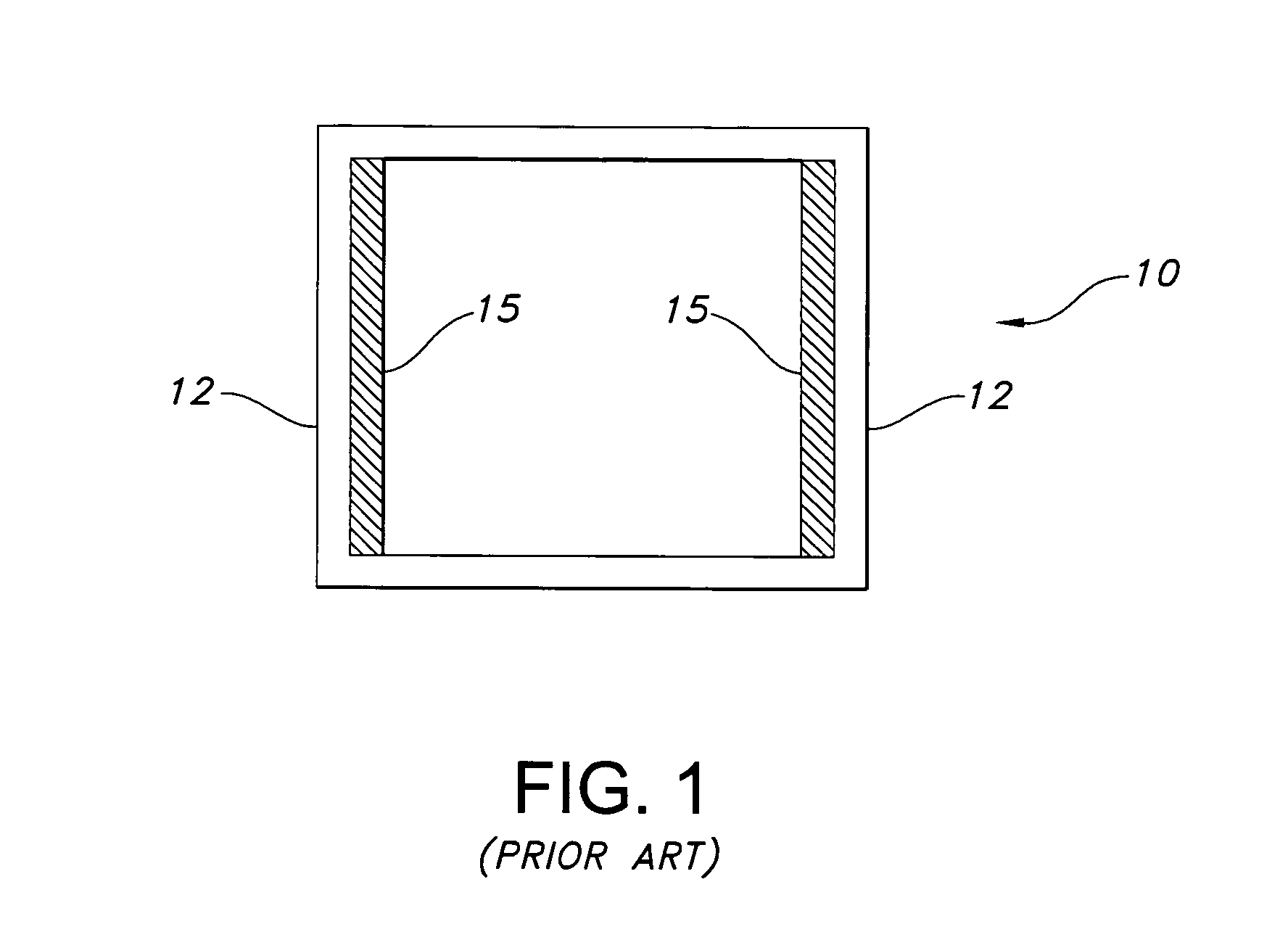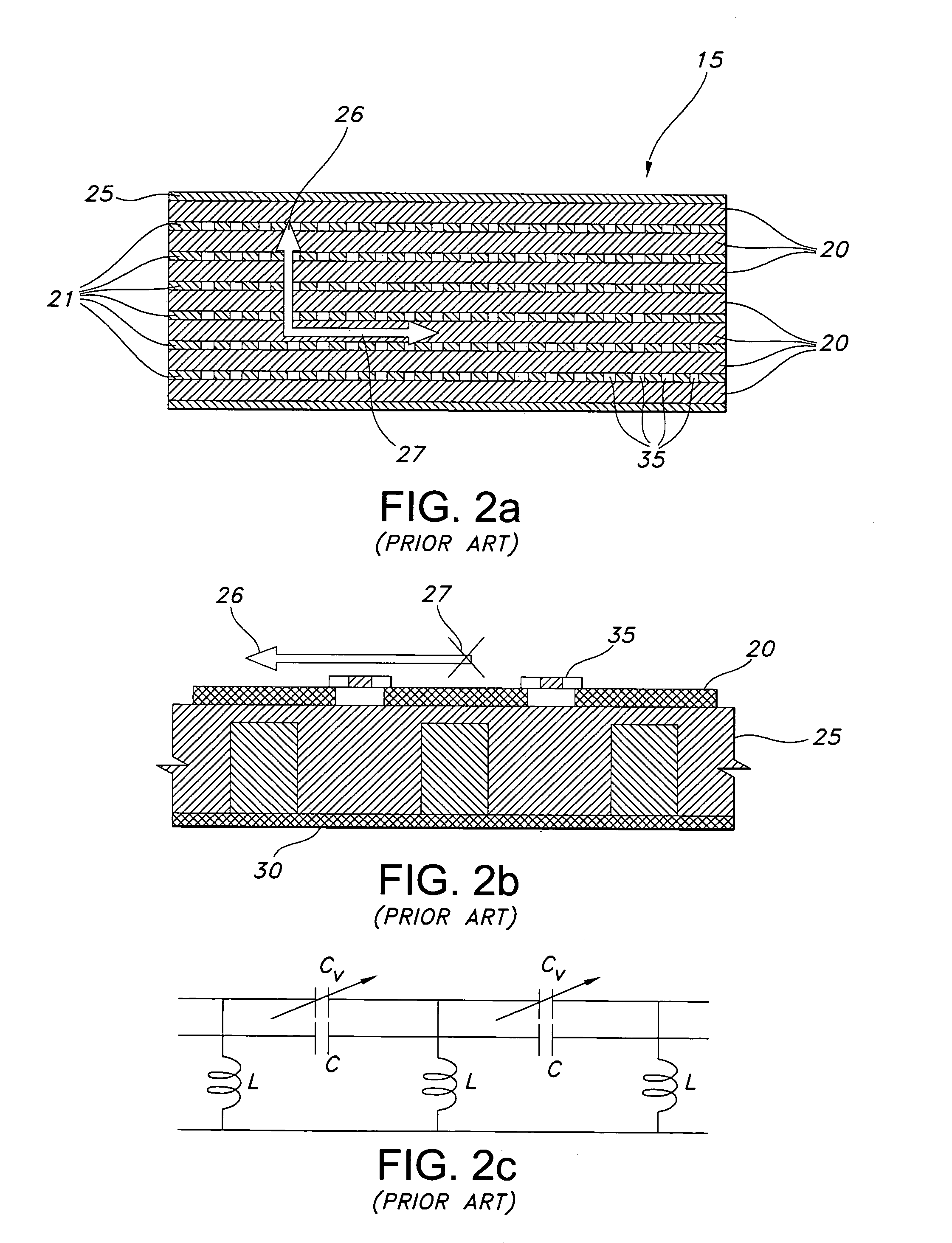Low-loss, dual-band electromagnetic band gap electronically scanned antenna utilizing frequency selective surfaces
an electromagnetic band gap and electronic scanning technology, applied in the direction of antennas, electrical equipment, etc., can solve the problems of increased loss due to input mismatch, small apertures yielding greater phase shift per unit length, etc., and achieve low cost and simple construction
- Summary
- Abstract
- Description
- Claims
- Application Information
AI Technical Summary
Benefits of technology
Problems solved by technology
Method used
Image
Examples
Embodiment Construction
[0032]The present invention is for a dual-band electromagnetic band gap (EBG) electronically scanned antenna (ESA) using frequency selective surfaces (FSS).
[0033]A single-mode analog waveguide phase shifter 10 using electromagnetic band gap (EBG) devices 15 on waveguide sidewalls 12 is shown in FIG. 1 and is described in the referenced paper by J. A. Higgins et al. “Characteristics of Ka Band Waveguide using Electromagnetic Crystal Sidewalls” and disclosed in U.S. Pat. No. 6,756,866. The references describe electromagnetic crystal (EMXT) devices implemented with EBG materials. EBG materials are periodic dielectric materials that forbid propagation of electromagnetic waves in a certain frequency range. The EBG material may be GaAs, ferroelectric, ferromagnetic, or any suitable EBG embodiment. EMXT device and EBG device are used interchangeably in the following description.
[0034]The waveguide sidewalls 12 of the single-mode EBG waveguide phase shifter 10 each contain an EBG device 15 ...
PUM
 Login to View More
Login to View More Abstract
Description
Claims
Application Information
 Login to View More
Login to View More - R&D
- Intellectual Property
- Life Sciences
- Materials
- Tech Scout
- Unparalleled Data Quality
- Higher Quality Content
- 60% Fewer Hallucinations
Browse by: Latest US Patents, China's latest patents, Technical Efficacy Thesaurus, Application Domain, Technology Topic, Popular Technical Reports.
© 2025 PatSnap. All rights reserved.Legal|Privacy policy|Modern Slavery Act Transparency Statement|Sitemap|About US| Contact US: help@patsnap.com



